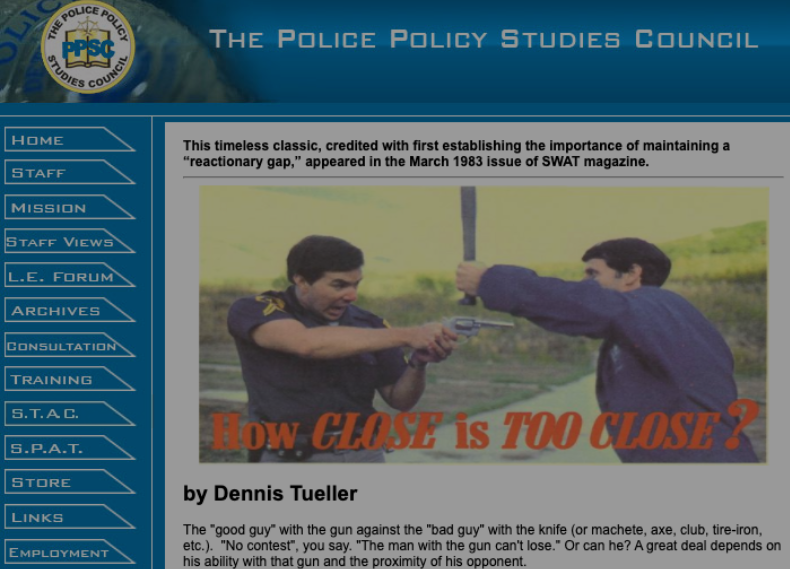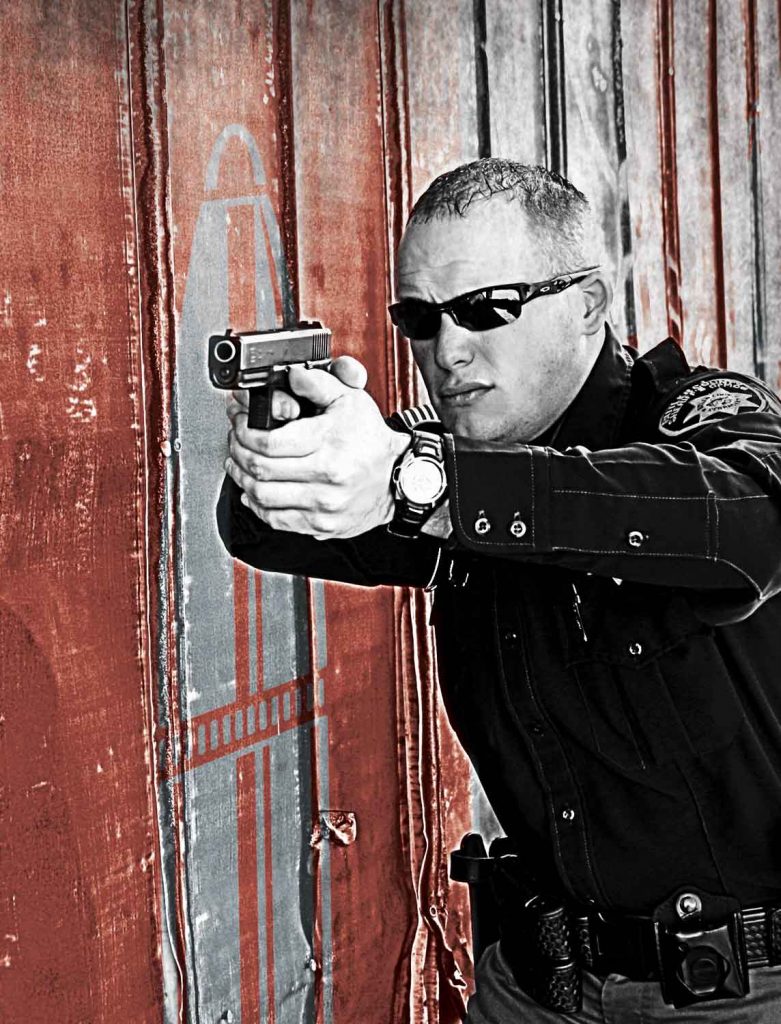The Tueller Principle
Disclaimer: I am not an attorney. Nothing in this content constitutes legal advice. If you are in need of legal advice on this matter, retain a licensed, competent attorney in your relevant jurisdiction.
This is being included here under the Gun Law blog topics because, in the minds of some, this is considered a law. It is not. Commonly known as the “21 foot rule”, this principle or rule was conjured up in 1982 by Salt Lake City police sergeant Dennis Tueller (blog photo). He and some fellow officers were at the range one day and a rookie officer asked Tueller if he would be justified in shooting someone carrying a knife. That officer was basically asking Tueller “how close is too close?”

So Tueller and some fellow officers conducted some experiments where the other officers pretended to be knife-wielding assailants. Test after test yielded roughly the same result. Officers could effectively draw, shoot and engage a target at roughly 1.5 to 2 seconds. If the assailant is rushing towards the officer, that is roughly 21 feet of distance which can be closed in 1.5 to 2 seconds.
He published his findings in a 1984 issue of SWAT Magazine, entitled “How Close Is Too Close”. Police departments all over the country have since been teaching this unofficial, undocumented, rule in their academies. Basically if an officer shoots an assailant from beyond 21 feet, they could be charged with murder, but if it is within 21 feet, they are justified…at least that is how many have come to interpret this “rule.”

Tueller argued that he never intended for his experiment to be incorporated into police training or to be used in courtrooms to justify shootings. Randy Shrewsberry, executive director of The Institute for Criminal Justice Reform told a Frontline reporter “It has no scientific basis at all. It was never published in any scientific journal…The main fault with the 21-foot rule is that it provides no nuance. That 21 feet is assuming the ground is flat. It is assuming the speed of the would-be attacker. It is assuming whether or not the officer has his gun holstered.” And it is possible that 21 feet isn’t enough.

Chuck Wexler, executive director of the national nonprofit Police Executive Research Forum, helps advise police departments on best practices. He said his organization started recommending to departments in 2016 that they eliminate the 21-foot rule from their training. He said he got some push-back at first — “Old habits die hard,” he said — but more agencies have gotten on board in recent years. “It’s a simple, simplistic way of looking at a more complicated issue,” he said. “And it has unbelievably tragic consequences.”
And according to an excerpt from a Dave Dolbee blog posted on July 7, 2017 by U.S. Law Shield…”The first issue I have with the 21-Foot Rule is the belief that it is somehow rooted in police doctrine or a legal standard. Removing the number ’21’ and the word ‘rule’ would go a long way toward dispelling the myth. Tueller’s research did not culminate in a rule; you are not suddenly safer at 22 feet than you were at 20. It is important to distinguish that Tueller developed a drill, not a standard. Just as many firearm enthusiasts insist on the distinction between a ‘modern sporting rifle’ and an ‘assault rifle,’ ‘magazine’ versus a ‘clip,’ and a dozen other examples of firearms terminology we could come up with off the top of our heads, I believe we need to properly identify our subject as the ‘Tueller Drill’ and not the ’21-Foot Rule.’ This is not only factually true, it goes a long way toward setting the correct mindset of the civilian gun handler.”
What does all of this mean for us, the law abiding gun owner? It means that civilian self-defense training should not focus on teaching civilians to be cops or overemphasize instruction in matters of law enforcement. It means that if you are getting training and the instructor brings up the “21 foot rule” or the “Tueller Principle”, that it is an improperly stated measurement of a safe working distance from an attacker.
Enclosed in this post (below) are two videos which are shown during U.S. Law Shield’s seminar on “High Profile Gun Cases and Lessons Learned”. These are shown on what not to do and how the defendant, arrested for shooting someone, talked his way into a 20 year jail term. It is being included here because during the police interrogation, the defendant references “the 21 foot rule”, arguably in a losing attempt to justify his shooting. The first video sets the scene and is the shorter of the two videos at a little over 2 minutes. The second video is the interrogation in the police station. At about the 1:11:40 mark in the upper right is where he states the “21 foot rule”, which should NEVER be used as a self-defense claim by civilians. If you are involved in a self-defense shooting and raise “the 21 foot rule” or “the Tueller Principle” during the interrogation, expect expert witnesses schooled in the Tueller Principle to be brought into court to discredit your defense.
BTW, the lessons learned during the U.S. Law Shield’s seminar is that 1) expect everything to be on video, and 2) lawyer up and shut up! First, the store’s CCTV captured the entire incident, which Drejka was unaware. Second, without the benefit of an attorney present during interrogation, Drejka sang like a canary, which was used against him in court. Thus, he basically talked his way into a 20-year manslaughter charge, for which he was found guilty.
The Tueller Principle Read More »
